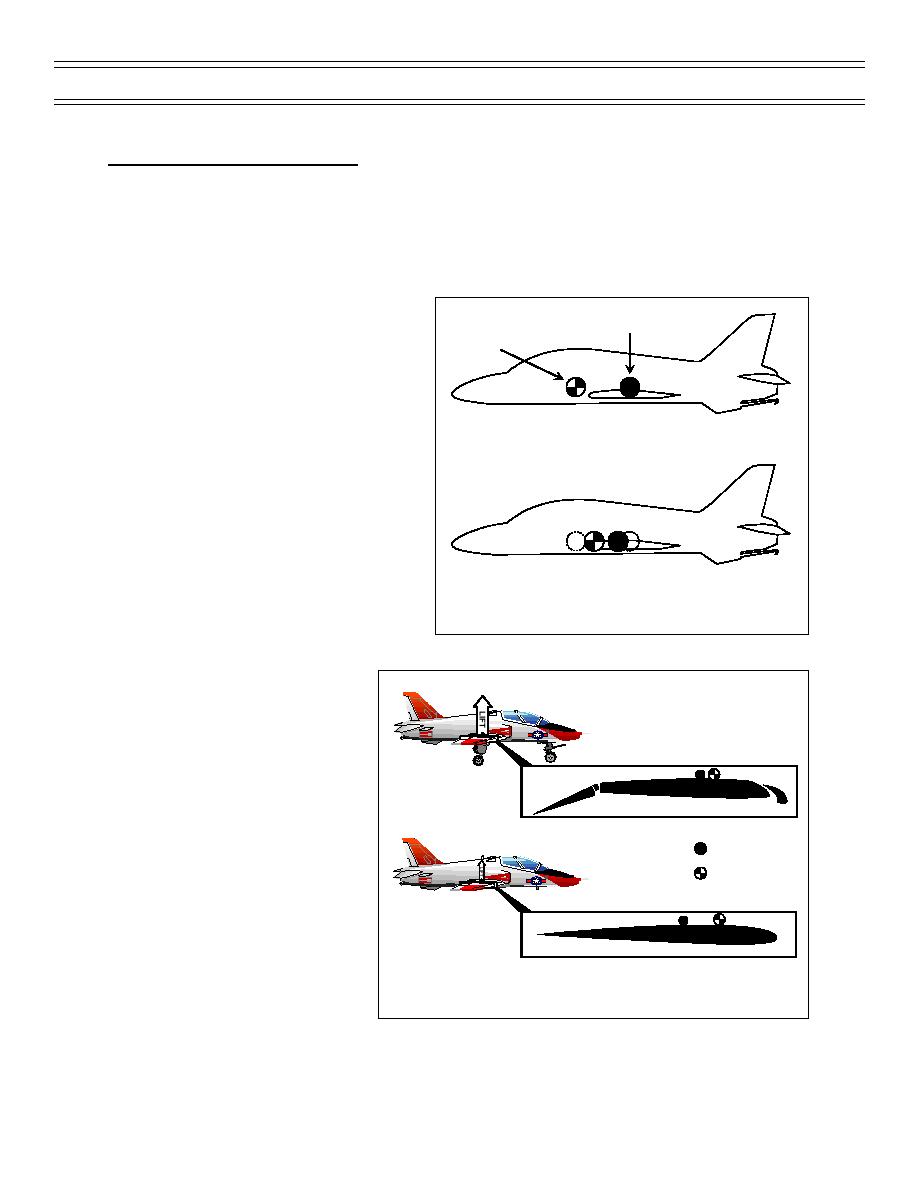
Aero Chapter 04, Stability
T-45 Aerodynamics Student Workbook
T-45 AERODYNAMIC CENTER (AC)
The aerodynamic center is the point along the chord where all changes in lift effectively take place. The
wings and fuselage are the main contributors to lift. The aerodynamic center forms a moment arm with
the CG and creates a twisting moment about the CG (Figure 68). The length of the moment arm between
the CG and AC affects stability. If the aerodynamic center and/or CG move, reducing the moment arm
length, the aircraft becomes less stable and more maneuverable. The direction of this twisting moment is
crucial to the aircraft’s performance.
When the AC is far aft of the CG, the aircraft is
very stable but less maneuverable. When the
Aerodynamic Center
AC moves forward to the CG, the aircraft is
Center of Gravity
neutrally stable, less stable than before but
very maneuverable. (Figure 68).
The stabilator is capable of controlling the
aircraft longitudinally in the designed range
MORE STABILITY, LESS CONTROL
when the AC is at or behind the CG. When
the aircraft is very slow and the AC moves in
front of the CG, the aircraft is unstable, may
pitch up, and may lack the stabilator
effectiveness to stop the pitchup (Figure 68).
FLAPS AND SLATS
Flap and slat extension on final approach
LESS STABILITY, MORE CONTROL
increases the camber of the T-45’s wing and
Figure 68: CENTER OF GRAVITY AND AERO
produces more lift. Flap extension moves the
CENTER VS STABILITY
AC forward 3.49" which is a large change and
makes the aircraft less stable but more
maneuverable (Figure 69). The
aircraft will balloon unless the pilot
counters the increased lift with 3-4
pounds of forward stick. As the T-45
slows, it will then settle unless the
NAVY
DANGER
pilot applies up to 1/3 aft stick. This
balloon/settle sequence is more
pronounced at 200 KIAS than at lower
airspeeds. Anticipating this sequence
when selecting “flaps down” will keep
the aircraft on altitude. Retraction of
= Aerodynamic
these high-lift devices will have the
Center
= Center
opposite result of extension.
NAVY
DANGER
of Gravity
When the flaps and slats move from
up to down, slots open up behind the
slats and double slots open up in front
of the flaps. These slots permit high
Figure 69: LONGITUDINAL STABILITY--GEAR,
pressure air under the wing to
FLAP/SLAT EXTENSION
energize the boundary layer on the
top of the wing and flap. The slots
opening increases the lift produced by
the wing and contributes to the ballooning and resulting slower approach speed.
(7-99) Original
Page 45



 Previous Page
Previous Page
